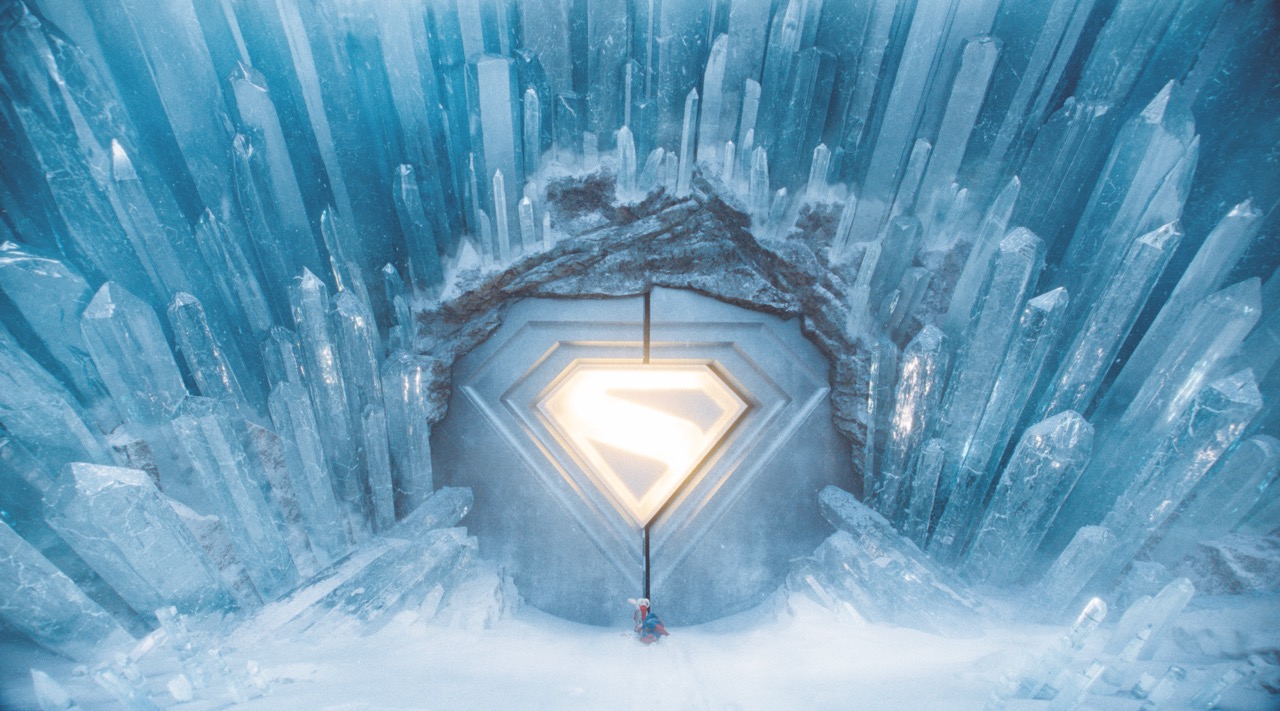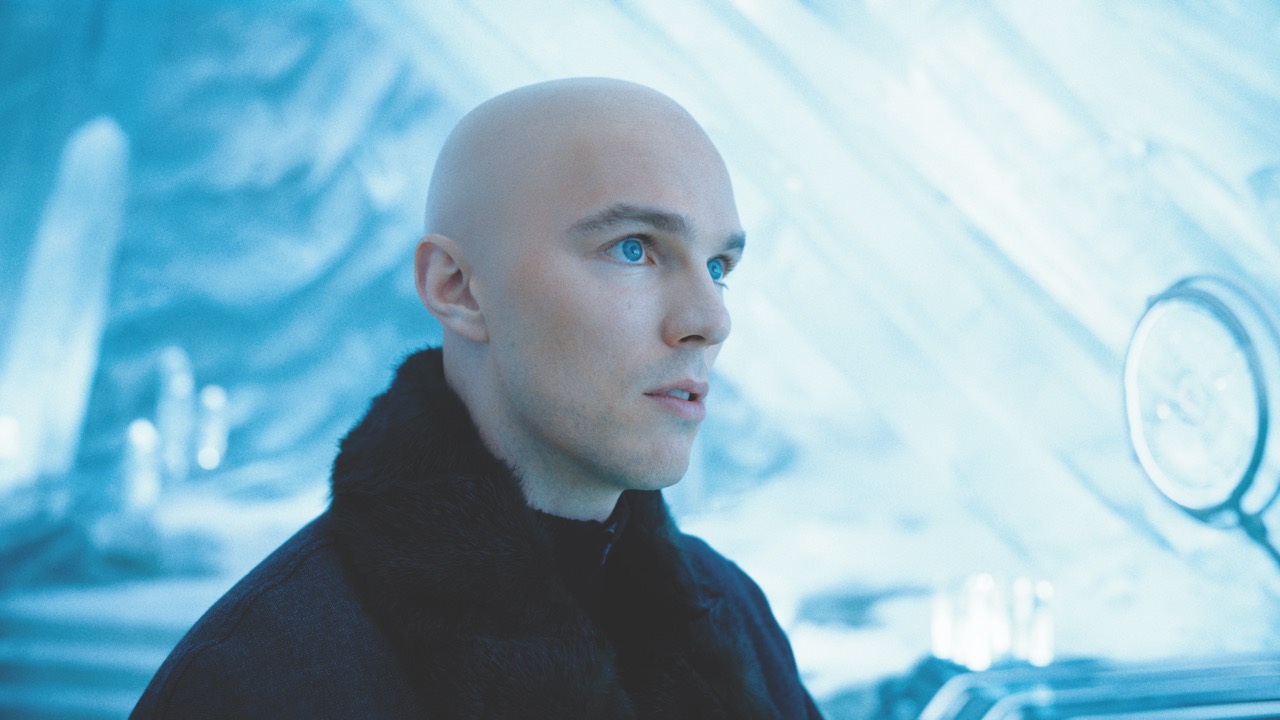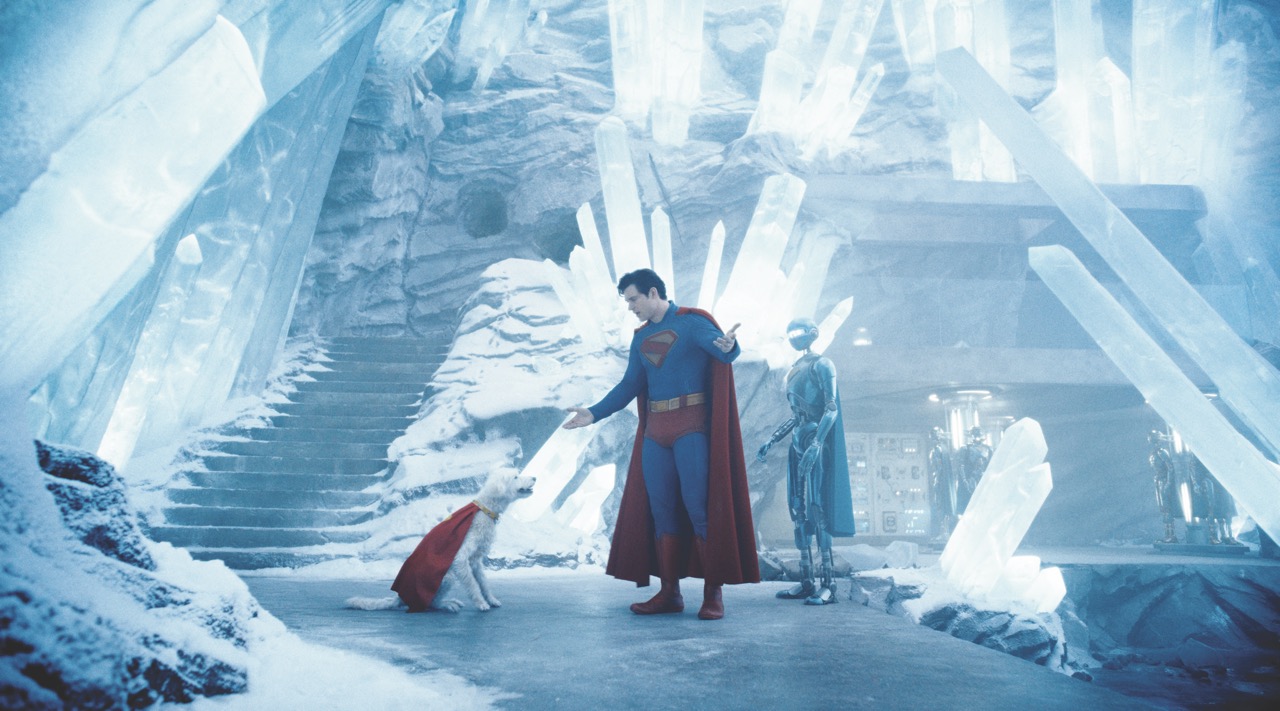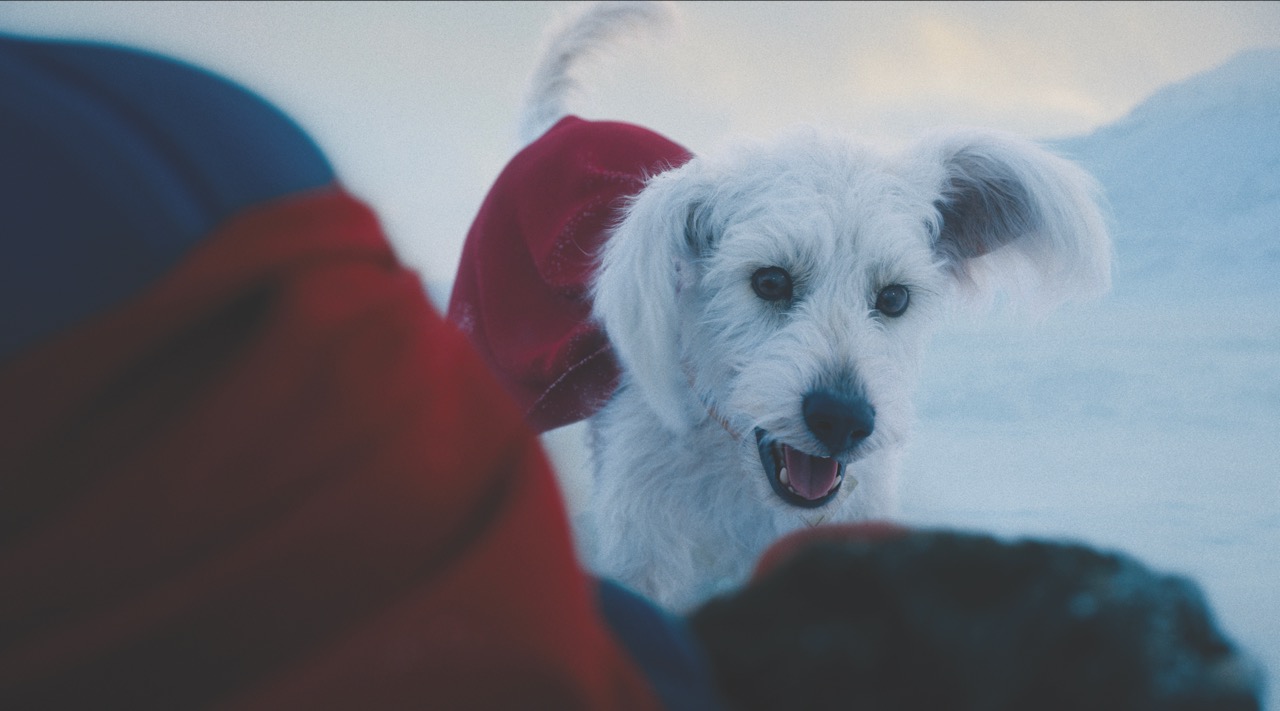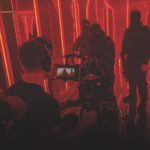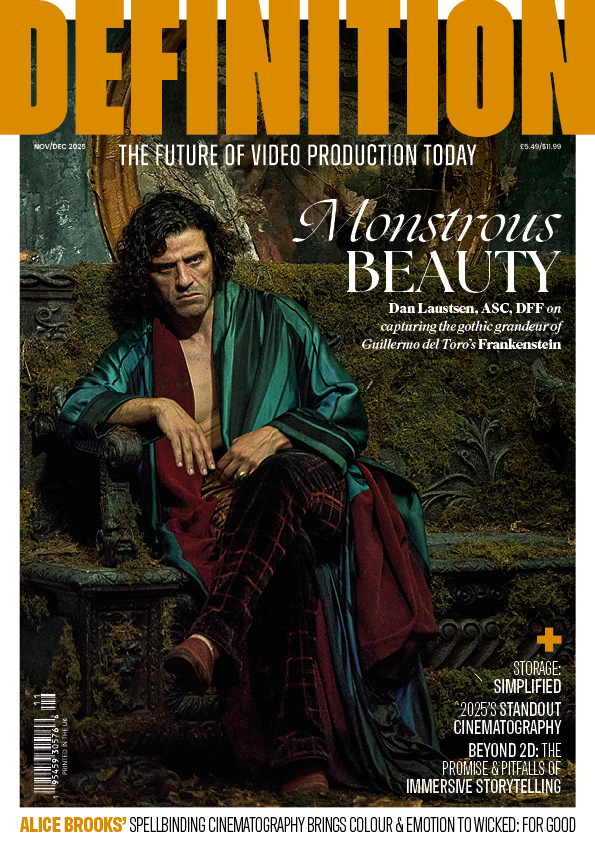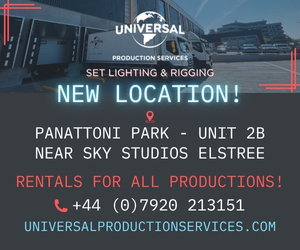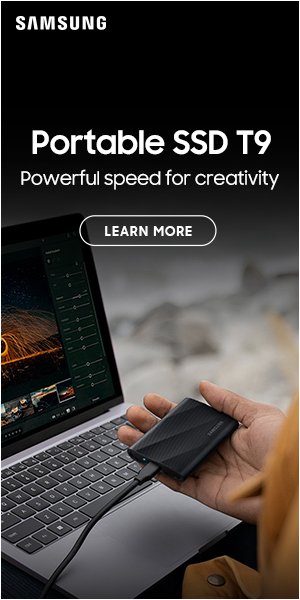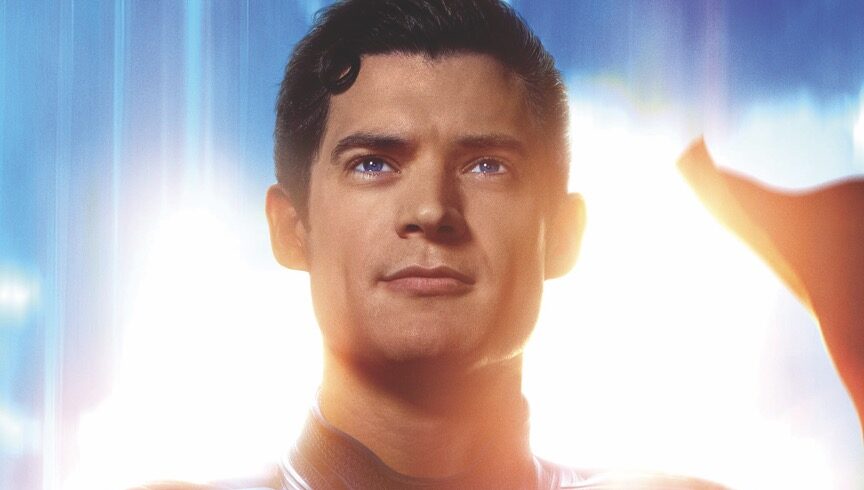
VFX breakdown – Superman
Posted on Oct 22, 2025 by Admin
Holding out for a hero
It’s a bird, it’s a plane, it’s… another Superman adaptation! We sit down with two VFX supervisors, Stephane Ceretti and Stephane Nazé, who helped bring James Gunn’s vision to the big screen
Words Katie Kasperson | Images Warner Bros Discovery
Superman first fell to Earth in June 1938, appearing in Jerry Siegel and Joe Shuster’s Action Comics #1. One short year later, the alien hero received his own magazine – unprecedented at the time – when Superman #1 hit shelves. By the early forties, the series was selling over a million copies every month, introducing readers to side characters like Lois Lane (love interest), Jimmy Olsen (colleague) and Lex Luthor (arch-enemy).
As with any intellectual property, it wasn’t long before Superman received the multimedia treatment. Superman (1948), a 15-part film serial starring Kirk Alyn, marked the hero’s first on-screen appearance in a live-action adaptation. Superman (2025) is the latest. This time, with David Corenswet in the titular role, writer-director James Gunn (Guardians of the Galaxy, The Suicide Squad) puts a contemporary spin on the classic comics, leaning heavily on VFX to bring the superhero’s story to life.
In Gunn’s version, Superman – also known as Clark Kent – has intervened in a geopolitical conflict between fictional countries Boravia and Jarhanpur. Defeated, for the first time ever, by a being called the Hammer of Boravia, Superman and his super-dog Krypto retreat to the Fortress of Solitude, a crystal castle hidden beneath the ice in Antarctica. Once healed up, Kent – a reporter for the Daily Planet – resumes his normal life in Metropolis, enjoying a secret relationship with his award-winning co-worker Lois Lane. Meanwhile, tech billionaire Lex Luthor is plotting to kill Superman, or at least ruin his reputation and turn humanity against him.
The story is steeped in otherworldly elements, from black holes and pocket universes to talking robots and flying dogs. No stranger to sci-fi, Gunn used CGI for characters like Groot (a tree), Rocket (a raccoon) and Cosmo (a dog) in the GOTG trilogy with VFX supervisor and right-hand man Stephane Ceretti. Gunn renewed this creative partnership on Superman, tapping Ceretti to handle the film’s many VFX elements, including Metropolis, the Fortress of Solitude and Kent’s canine companion Krypto.
Down to Earth
The thing about Superman: “He’s a character everybody knows, and who we’ve seen many, many times before,” begins Ceretti. “There are a lot of eyes on the project, so there’s extra pressure on us to create something really good.”
With Superman’s story dating back nearly 100 years, there’s a retro element, visually, that Ceretti wanted to maintain. “Even though there are a lot of VFX in the film, we always try to base everything on something we can capture in camera,” he explains. “We pushed as hard as we could to go on location when needed,” he says, travelling to Svalbard to film the opening scene. In contrast, Metropolis was a backdrop – designed by Industrial Light & Magic (ILM) – that was placed on an LED screen outside Lex Luthor’s tower and Kent’s apartment.
For scenes at the Daily Planet, where Kent and Lane work, the crew travelled to Macon, Georgia and shot on location in an ‘old train station’, according to Ceretti. “On other projects, they might have put a blue screen outside. We said ‘no, no, no, let’s build a view’. It worked with the aesthetic we wanted – I don’t want to say it’s an old-school style, but using techniques Hollywood has forgotten about. There’s no reason not to do that if you have the right mindset and the right people,” he continues. “It makes it all look more real.”
Man’s best friend
Framestore’s Stephane Nazé was handed Gunn’s script for Superman in October 2023, right after GOTG Vol 3 had finished its theatrical run.
“I was amazed by the script,” Nazé begins. “It was a different way to read Superman; much closer to the comic books. It was really attached to the origin and spirit of the character.”
Ceretti brought Framestore on board to handle two of Superman’s most iconic assets: Krypto and the Fortress of Solitude. Framestore ultimately contributed nearly 600 shots – 541 of which were included in the final cut – but Nazé’s VFX team essentially started from scratch.
“Gunn did the storyboard to get an idea about the shots and the framing, and to start evaluating the complexity of the work,” he shares. They kicked things off with Krypto, Superman’s small yet super-powerful dog. “That was the first brief we got – James said, ‘I want my dog to be Krypto’.”
While Gunn didn’t actually want his dog Ozu to appear in the film, the animal did serve as the basis for Nazé and his fellow VFX artists. “We never animate without references,” he explains. “We got lots of elements, videos, clips,” he says, which helped ensure Krypto moved and behaved like a real dog. “We had a lot of material to play with, and also to use for animation development,” Nazé continues. “The animators need that; they need to get feedback with real references in order to be consistent. We don’t want shots that don’t share the same vibe.”
When actors interact with a computer-generated character, there’s generally a stand-in provided on-set. For Krypto, “that was a stuntperson sitting on the ground, so the actors knew exactly where the dog would be in the shot. Sometimes, it was a stuffed animal,” Nazé recounts. “For other shots, it was a real dog (named Jolene). It was there for framing, but also to give us technical information about the spec response, how the white fur reacts and the direction of lighting. Having stand-ins was super informative for everybody.”
In the second half of the film, there’s a scene in which Lois Lane is driving Mister Terrific’s ship, and Krypto jumps into her lap. “We had Jolene physically on top of Lois,” begins Ceretti, “so that the interaction between her and Krypto would be as real as possible. It’s a lot of extra work to replace a real dog with a CG one, but it pays off in the long term, in terms of what we get out of the scene.”
Cold as ice
Superman opens on a glacier; there’s no one and nothing to be seen around. The audience reads a few sentences of text which quickly summarises the film’s intended backstory – that Superman has just lost his first fight. A few seconds later, he plummets into the snow, and Krypto appears, dragging him cape-first into his Fortress of Solitude.
The fictional Fortress is thought of as Superman’s headquarters, and a place that only a Kryptonian like Superman – or his cousin Supergirl – can enter. Gunn’s Fortress takes its inspiration from the comics, placing it in Antarctica rather than the Arctic, but maintaining the frozen aesthetic. To keep its location a secret, the Fortress can disappear into the ice, reappearing only as needed.
“The Fortress was one of the bigger challenges for us, for multiple reasons,” begins Nazé. “The main one is that it’s huge, reflective, refractive, there’s a lot of transparency and the light is bouncing. It meant that the render times were crazy. We spent months and months finding techniques to render some of the shots.”
Very few shots include the entire Fortress; this is on purpose. When working with a set of such scale, extending the location requires CGI in all directions. “The Fortress was gigantic. Outside, it was always CGI. But inside, the set was absolutely phenomenal. I was really impressed,” Nazé shares. Lots of it – such as the crystals, which move – was visually enhanced in post. “It had to be beautiful. The idea was to have that ‘wow’ factor.”
Holographic fantastic
Besides housing Superman and Krypto, the Fortress of Solitude also hosts a team of humanoid robots who attend to Superman’s injuries. “We had real robots our friends from Legacy had created, which were fully articulated, camera-ready and remote-controlled,” shares Ceretti. “We quickly found out that they’re also highly reflective – as soon as the camera crew were close up, you could see them. The set is reflected. We ended up with a robot that could be in camera but came with tons of other problems.”
Framestore stepped in to replace the robots in post. “We did one-to-one matching between the real robot shot on set and a CG render in the exact same shot, to make sure everything lined up. They got a perfect match,” says Ceretti.
While healing Superman, the robots also play a hologram of his Kryptonian parents, at his request – a message that was damaged when he fell to Earth. This hologram serves a central purpose in Gunn’s story, as the missing part of the message, later recovered by Luthor, incriminates Superman as having been sent to colonise and repopulate Earth.
Although they’ve become a sci-fi staple, appearing in the likes of Star Wars, Tron and Blade Runner 2049, holograms are very tricky to get right. To create the message from Superman’s parents, Framestore collaborated with Ipswich-based Infinite-Realities on Gaussian splatting, a rendering technique that uses volumetric capture to replicate 3D objects. Bradley Cooper and Angela Sarafyan, who play Superman’s parents, recorded their message from a studio in London, with Gunn directing remotely.
“The idea was to capture the two- or three-minute speech in its entirety, then be able to put the data where we wanted. We move the holograms around in the Fortress; they appear in different spots,” begins Nazé. “One of the complexities was extra effects; we were looking to add some imperfections and we added transparency.” For instance, when the message glitches, ‘you can see the back of the body’ for a truly 3D effect.
Teaming up
While Framestore primarily handled Krypto and the Fortress, ILM contributed Metropolis – including the rift, when the city splits open – and Wētā FX the pocket universe. For shared VFX elements, such as the nanites on The Engineer, Ceretti liked to ‘put brains on the problem’. “I would say, ‘I just want to see your take on this’. Then, we’d get all the different ideas from everyone, talk them over and pick and choose. We would collaborate.
“We love what we do. We love sharing what we do. We love talking about it among ourselves,” Ceretti continues. In the end, “we were all trying to make the best possible movie – we wanted it to look as good as it possibly could.”
Check out the VFX breakdown of Mickey 17.
This story appears in the May/June 2025 issue of Definition


